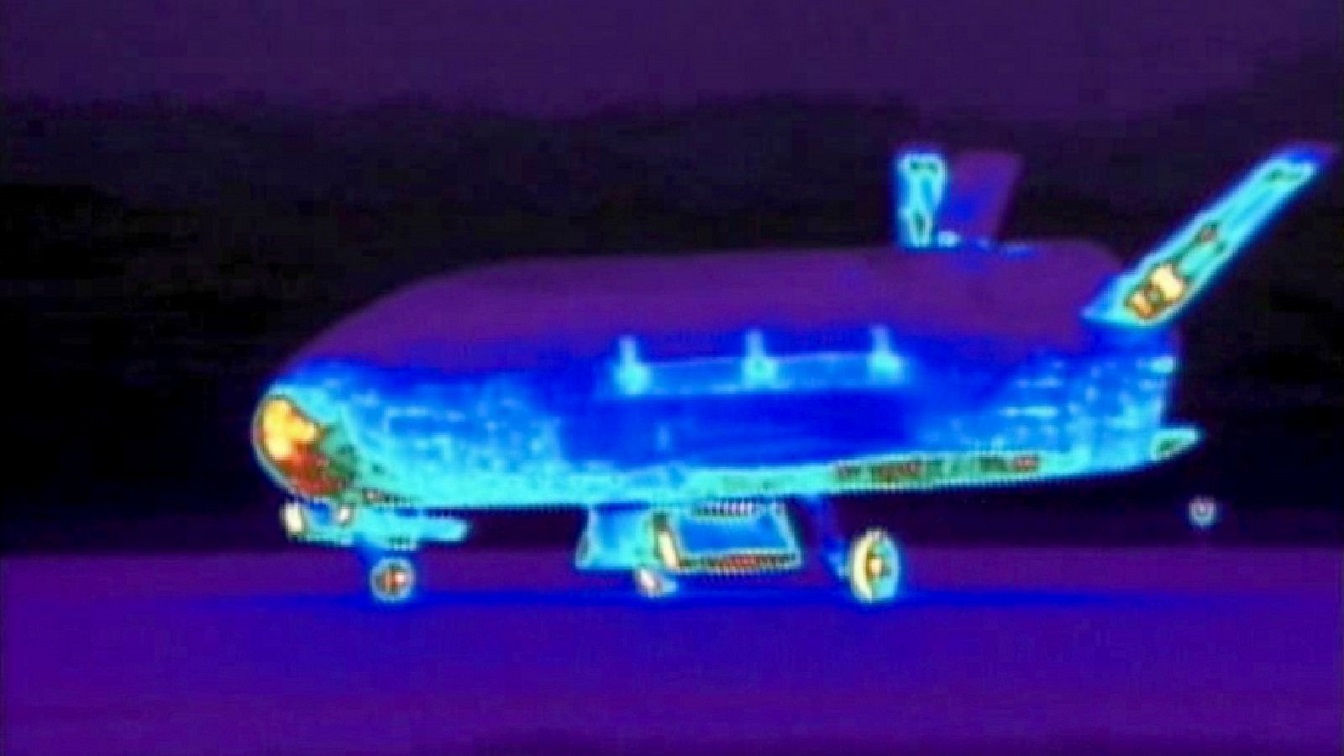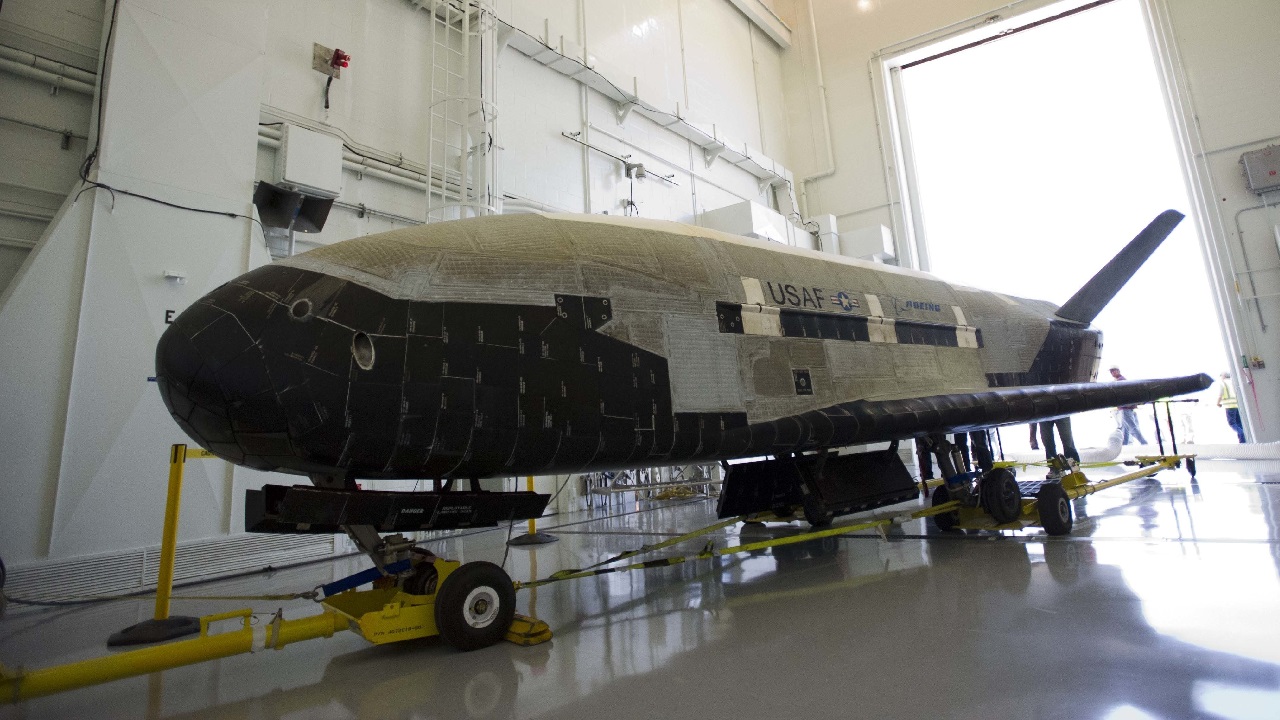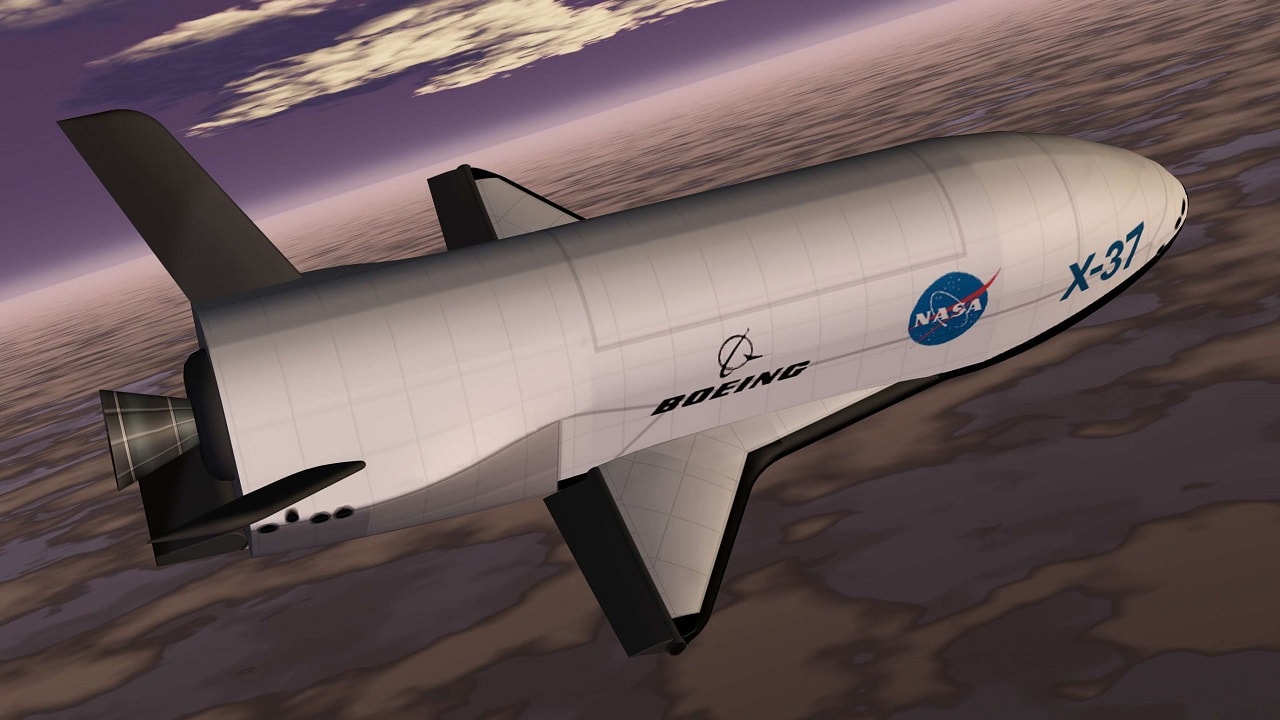Key Points and Summary: Five years after its formation, the U.S. Space Force leverages the advanced capabilities of the Boeing-built X-37B Orbital Test Vehicle. Resembling a miniature Space Shuttle, this reusable, unmanned spaceplane conducts secretive missions lasting years.
Key Point #1 – Its latest mission involved unique maneuvers like aerobraking in highly elliptical orbits, boosting America’s surveillance and operational flexibility in space.

X-37B. Image Credit: NASA YouTube/Screenshot.
Key Point #2 – Meanwhile, China operates a similar spacecraft, the Shenlong, capable of proximity operations—raising concerns of potential offensive actions. With space increasingly contested and congested, the X-37B is central to the U.S. strategy, combining cutting-edge technology with enhanced surveillance capabilities to maintain American superiority amid growing space competition.
Why the Secretive X-37B is Key to Maintaining U.S. Dominance in Space
Five years after the creation of the U.S. Space Force, America’s newest branch is finding its footing in space, leveraging the unique capabilities of the X-37B Orbital Test Vehicle to gather data and operate in an environment clogged with space debris as well as burgeoning networks of private and government satellites.
X-37B, Explained
The X-37B, built by Boeing, is a mature derivative of the X-37 program, headed by NASA in the early 2000s, later moved to DARPA, then to the Air Force Rapid Capabilities Office in 2010.
Outwardly, the X-37B is somewhat reminiscent of the NASA Space Shuttle — but at about 29 feet long, it is significantly smaller than the Space Shuttle — and leverages some of that program’s design aspects and technology.
Like the Space Shuttle, the X-37B relies on a large rocket booster to get into space and glides unpowered back down to Earth.
The U.S. Air Force has emphasized on several occasions that the X-37 B’s purpose is to forward the use of reusable aircraft in space as well as to conduct experiments while in space. The most recent X-37B to go aloft conducted an experiment examining the interplay of radiation in space on plant growth.
And, thanks to the X-37 B’s small size, it is highly maneuverable and can remain in space for years — the X-37 B’s longest mission saw it aloft for nearly two and a half years.
Most recently, an X-37B made waves thanks to a photo posted to Facebook by the United States Space Force last week (though the photo was taken sometime last year) in which the Earth can be seen in the lower part of the frame, with the X-37 B’s open fuselage and exposed cargo bay at the top. The photo was somewhat reminiscent of the Earthrise photograph, taken by American astronaut William Anders in 1968 during the first manned mission to orbit the moon ahead of the Apollo 11 landing the following year.
“An X-37B onboard camera, used to ensure the health and safety of the vehicle, captures an image of Earth while conducting experiments in a highly elliptical orbit in 2024,” the U.S. Space Force photo caption reads. “As part of the X-37 B’s seventh mission, the vehicle executed a series of first-of-its-kind maneuvers, called aerobraking, to safely change its orbit using minimal fuel.”
This particular X-37B was the seventh of its kind built by Boeing and was the first time an X-37B was launched from a SpaceX Falcon Heavy rocket. It’s all part of the increasing commercialization of space, where vehicles and spacecraft from NASA, the European Space Agency, and elsewhere are launched into orbit by non-government companies like SpaceX at significantly lower cost per kilogram than government rockets could achieve.
Highly Elliptical Orbit
The U.S. Space Force announced the X-37 B’s aerobraking maneuvers late last year, adding that the maneuvers would also dispose of service module components. Heather Wilson, the 24th Secretary of the Air Force, hinted at what highly elliptical, aerobraking-type orbits could achieve during a talk given at the Aspen Security Forum in 2019.
The X-37B “looks like a small version of the [space] shuttle, but it’s unmanned. One of the things that’s fascinating about that space plane is that it can do an orbit that looks like an egg. And when it’s close to the Earth, it is close enough to the atmosphere to turn.”
Wilson added that “happens on the far side of the Earth from our adversaries. They don’t know where it’s going to come up next. And we know that that drives them nuts and I’m really glad about that.”
Space Surveillance Network
This latest mission saw the X-37B operating in a Highly Elliptical Orbit, or HEO, rather than a Low Earth Orbit (LEO), a first for the program — and a unique opportunity for the United States Space Surveillance Network, a network of space-based sensors that track man-made objects orbiting the Earth.
Operating 390 miles above the Earth, the Space Surveillance Network allows for constant 24/7 tracking of space debris, satellite networks, and anything else in orbit without interruption or disruption caused by inclement weather like rain, dust, or cloud cover. The sensors, operating on a two-axis gimbal, can move their sensor suite to various targets quickly without the need for fuel to reposition.

The X-37B Orbital Test Vehicle (OTV), the Air Force’s unmanned, reusable space plane, landed at Vandenberg Air Force Base at 5:48 a.m. (PDT) June 16. OTV-2, which launched from Cape Canaveral Air Force Station, Fla., March 5, 2011, conducted on-orbit experiments for 469 days during its mission. The X-37B is the newest and most advanced re-entry spacecraft. Managed by the Air Force Rapid Capabilities Office, the X-37B program performs risk reduction, experimentation and concept of operations development for reusable space vehicle technologies. (photo credit: Boeing)
Flying the X-37B deep through space provides the Space Surveillance Network a real-world opportunity for tracking spacecraft — an important capability for the U.S. Space Force in the face of increasing Chinese capabilities in space.
The China Connection
China operates a spacecraft similar to the X-37B, dubbed Shenlong. Roughly analogous and of a similar size, the Shenlong completed its third proximity operation in 2023.
“Proximity operations usually grab the attention of space watchers, as they can serve nefarious purposes. The ability to manoeuvre close to other satellites is seen as dangerous for several reasons: the asset could eject a projectile close to another satellite, damaging it as a result, eavesdrop on another satellite’s signals or even disrupt them,” a publication by the Royal United Services Institute, a British defense think tank, explained.
“However, close-proximity manoeuvres are not always nefarious in nature – they are in fact needed if we want to operate in a sustainable space environment, as these technologies also enable refuelling and general maintenance of satellites, thereby increasing their lifetime in orbit and helping to reduce space debris.”
As space becomes more and more cluttered, close-proximity maneuvers involving a robotic arm — like the kinds seen on deep sea submarines — powerful magnets, or other technologies are increasingly necessary to drag defunct satellites or debris into graveyard orbits and prevent collisions between objects. But that same capability could be used to push, pull, or shoot down enemy satellites and risks setting off a space arms race in which increasingly robust defenses counter strong offensive capabilities.

X-37B. Image Credit: Creative Commons.
Engage Warp Speed
The United States remains the preeminent power in space, though China would like to be the world’s leader in space by 2045, and Russia retains a significant spoiler capability. But, with the commercialization of space or public sector firms supplanting governments in the space industry, remaining hidden in space is increasingly difficult. Both the X-37B and China’s Shenlong may find it nearly impossible to stay under wraps in the months and years to come.
As the recently created United States Space Force finds its sea legs in space, powerful observational capabilities will be just as important, perhaps more so, than offensive weaponry. At the moment, the U.S. Space Force seems intent on bolstering their tracking capabilities.
Despite the highly secretive nature of the X-37B and Shenlong programs, their activities will become increasingly transparent in the future.
About the Author: Caleb Larson
Caleb Larson is an American multiformat journalist based in Berlin, Germany. His work covers the intersection of conflict and society, focusing on American foreign policy and European security. He has reported from Germany, Russia, and the United States. Most recently, he covered the war in Ukraine, reporting extensively on the war’s shifting battle lines from Donbas and writing on the war’s civilian and humanitarian toll. Previously, he worked as a Defense Reporter for POLITICO Europe. You can follow his latest work on X.

